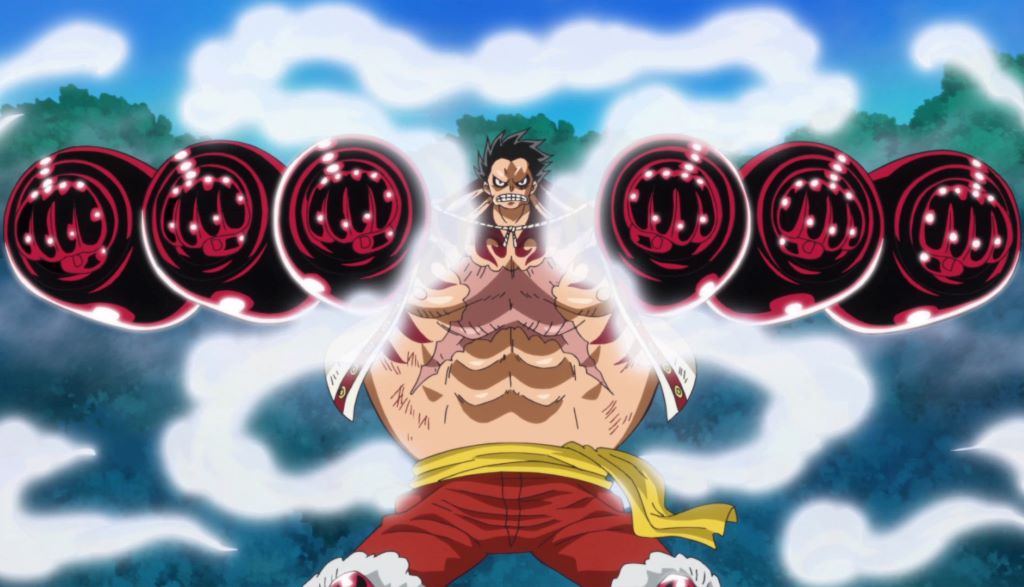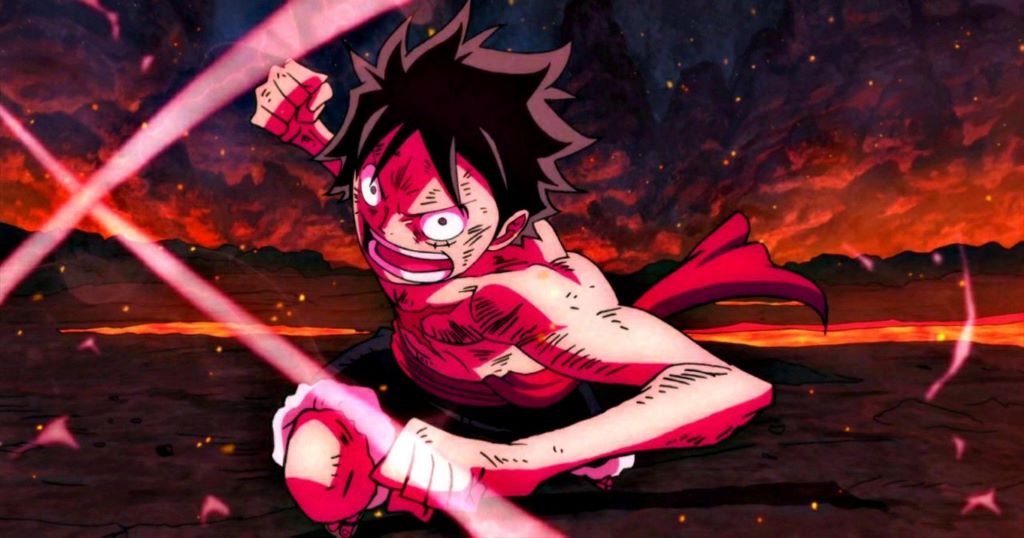An introduction to working for a builders’ merchant
September 26, 2025
How Long Does It Take to Change a Tire? A Complete Guide for Every Driver
October 14, 2025When it comes to Monkey D. Luffy’s incredible transformations in One Piece, speed has always been a defining characteristic. Fans have debated for years about which form truly reigns supreme in terms of velocity. According to analysis from Trends Magazine, understanding the mechanics behind each transformation reveals fascinating insights into Luffy’s combat evolution. This comparison dives deep into the speed capabilities of two iconic forms that changed the game forever.
Luffy’s journey from a simple rubber boy to a formidable emperor of the sea showcases remarkable growth. Among his arsenal of transformations, Gear Second and Boundman (Gear Fourth) stand out as revolutionary techniques. Each form brought unique advantages to the table, but their approach to speed differs dramatically. While gear second luffy focused purely on explosive velocity, Boundman combined power with mobility in unexpected ways.
The debate isn’t just about raw numbers. It’s about understanding how each transformation fits into Luffy’s fighting style and strategic approach. Throughout this article, we’ll break down the science behind these forms, compare their speed capabilities, and determine which situation calls for which transformation.
Table of Contents
ToggleUnderstanding Gear Second’s Speed Mechanics
Gear Second revolutionized how Luffy approached combat when it first appeared during the Enies Lobby arc. This transformation works by pumping blood through his body at accelerated rates, similar to doping. The result is a dramatic increase in speed, strength, and metabolism. His movements become so fast that opponents struggle to track him with the naked eye.
The technique essentially turns Luffy’s cardiovascular system into a turbo engine. By using his rubber properties to act as a pump, he forces blood to circulate faster than any normal human could survive. This increased blood flow delivers more oxygen to his muscles, enabling explosive bursts of speed. Steam rises from his body as a visual indicator of the intense heat generated by this process.
During battles, gear second luffy displays movement speed that creates afterimages. He can close gaps between opponents in fractions of a second. His punches arrive before enemies can react, making him nearly impossible to counter without advanced observation haki. This transformation specifically prioritizes agility and swift, precise strikes over raw destructive power.
The stamina cost, however, is significant. Early versions of Gear Second shortened Luffy’s lifespan with each use. Over time, through training and mastery, he reduced these negative effects. Now he can activate it instantly and maintain it for extended periods without the same life-threatening consequences. This evolution made the technique more practical for prolonged engagements.
Boundman’s Unique Approach to Mobility
Boundman takes a completely different approach to the concept of speed. Introduced during the Dressrosa arc against Donquixote Doflamingo, this Gear Fourth variation emphasizes power and defense alongside mobility. Rather than pure running speed, Boundman excels at explosive directional changes and aerial combat capabilities that redefine traditional movement.
The transformation inflates Luffy’s muscles with haki-infused air, creating a bouncy, compressed form. This compression stores potential energy like a coiled spring. When released, it launches Luffy at tremendous speeds in specific directions. Think of it as controlled explosions rather than sustained velocity. Each movement carries devastating force behind it.
Boundman’s mobility shines through techniques like “Python” and its ability to fly using the compression and release of air. Gear second luffy runs fast, but Boundman launches itself like a cannonball. The form can change direction mid-air with incredible precision, something traditional running speed cannot match. This three-dimensional movement gives it advantages in specific combat scenarios.
The trade-off comes in sustained chases or long-distance travel. Boundman excels in burst movement but lacks the continuous high-speed locomotion that Gear Second provides. Additionally, the ten-minute time limit and subsequent cooldown period make it less practical for extended pursuits. Strategic deployment becomes crucial when choosing this transformation.
Direct Speed Comparison in Combat Scenarios
Measuring speed between these forms requires examining different types of velocity. Linear running speed clearly favors Gear Second. Luffy can maintain high speeds over distance, pursue fleeing opponents, and execute rapid repositioning across battlefields. For straightforward chases or quick escapes, Gear Second remains unmatched in Luffy’s arsenal.
Attack speed presents a more nuanced picture. Gear Second delivers rapid-fire punches with incredible frequency. The Jet Gatling technique exemplifies this, overwhelming opponents with sheer volume of strikes. Each individual punch may not carry maximum power, but the cumulative damage and unpredictability make it devastating against many opponent types.
Boundman’s attacks, while fewer in number, arrive with explosive force and unpredictable trajectories. Techniques like Kong Gun travel at incredible speeds thanks to the compressed energy release. The attacks can change direction mid-flight, making them harder to dodge despite potentially slower initial velocity. This unpredictability compensates for any speed disadvantage.
Reaction speed and combat footwork show interesting contrasts. Gear second luffy maintains constant high mobility, allowing for better defensive positioning and evasion. Boundman’s bouncy property provides automatic recoil from attacks, creating defensive benefits through different mechanics. Both approaches offer advantages depending on the opponent’s fighting style and environment.
Environmental Factors and Practical Applications
Terrain significantly impacts which form performs better. Open spaces with flat ground favor Gear Second’s running speed. Luffy can cover vast distances quickly, maintain pressure on opponents, and utilize his full speed potential. Urban environments with buildings and obstacles still allow for effective maneuvering using his rubber properties to swing and redirect momentum.
Aerial combat heavily favors Boundman. The ability to fly and execute three-dimensional attacks gives it unparalleled superiority in sky battles. Opponents without flight capabilities find themselves at severe disadvantages. The compression mechanics allow for mid-air adjustments that traditional running speed cannot replicate, even with moon walk techniques.
Confined spaces present unique challenges for both forms. Gear Second maintains its effectiveness in tight quarters, allowing for quick dodges and precise strikes. Boundman’s larger size can become a hindrance in cramped environments, limiting movement options. However, the destructive power can quickly create more space by demolishing obstacles.
Water environments reveal interesting dynamics. While Devil Fruit users struggle in water regardless, fighting near water or on ships creates specific considerations. Gear Second allows for better balance and quick repositioning on unstable surfaces. Boundman’s flight can avoid water hazards entirely, though the transformation’s bulk makes ship-to-ship combat more challenging.

Evolution and Mastery Over Time
Luffy’s growing mastery of both forms has blurred some speed distinctions. During the Wano arc, we see him combining elements from different gears seamlessly. He can activate gear second luffy instantly without the preparatory stance required in earlier arcs. This instantaneous activation effectively eliminates any speed disadvantage from transformation time.
Advanced haki integration further enhanced both forms’ capabilities. Future sight combined with Gear Second creates nearly untouchable speed, as Luffy dodges before attacks arrive. Boundman with advanced armament haki penetrates defenses while maintaining its explosive mobility. These improvements make direct comparisons even more complex than initial implementations.
Physical conditioning and experience have reduced the weaknesses of both transformations. Gear Second no longer causes the same visible strain on Luffy’s body. He can maintain it almost indefinitely during intense battles. Boundman’s time limit remains, but improved efficiency extends its effective combat duration. Recovery time between uses has also decreased with practice.
The introduction of Snakeman, another Gear Fourth variant, showed Luffy’s understanding that different situations require different approaches to speed. Snakeman emphasizes sustained high-speed attacks with flexibility, bridging some gaps between Gear Second’s constant velocity and Boundman’s burst power. This evolution demonstrates that the “best” form depends entirely on tactical requirements.
Strategic Considerations for Different Opponents
Against speed-type opponents, Gear Second often proves more effective. Enemies who rely on evasion and quick strikes face difficulty when Luffy matches or exceeds their velocity. The sustained speed allows him to maintain pressure without giving opponents breathing room. Quick strikes from multiple angles overwhelm defensive capabilities.
Power-type opponents who prioritize defense and heavy hits often fare better against Gear Second’s lighter strikes. This is where Boundman’s explosive power becomes crucial. The combination of speed and force breaks through defenses that would shrug off Gear Second attacks. The unpredictable attack angles catch heavily armored opponents off guard.
Versatile fighters with balanced abilities require tactical form switching. Starting with Gear Second to test defenses and movement patterns makes sense. Transitioning to Boundman when openings appear or when breakthrough power becomes necessary creates effective combinations. Understanding when to switch defines Luffy’s growth as a strategic fighter.
Multiple opponents scenarios favor Gear Second’s mobility. Moving between targets rapidly, avoiding encirclement, and striking weak points quickly all benefit from sustained high speed. Boundman’s area-of-effect capabilities help with groups, but the mobility limitations make it less ideal when facing numerous fast opponents simultaneously.
Conclusion
The comparison between Gear Second and Boundman speed reveals no simple winner. Gear second luffy excels in sustained velocity, linear speed, and continuous high-mobility combat. It’s perfect for chases, quick repositioning, and overwhelming opponents with rapid strikes. The transformation remains Luffy’s go-to choice for situations requiring constant movement and endurance.
Boundman dominates in explosive burst speed, aerial combat, and directional control. Its unique mobility mechanics create opportunities impossible with running speed alone. The combination of devastating power with unpredictable movement patterns makes it ideal for breaking through strong defenses and aerial superiority.
Ultimately, Luffy’s genius lies in knowing when to deploy each transformation. Speed isn’t just about how fast you move, but how effectively you apply that movement to achieve victory. Both forms represent crucial tools in his arsenal, each perfect for specific tactical situations. The debate continues among fans, but perhaps the real answer is that both forms showcase different dimensions of what speed means in combat.
Frequently Asked Questions
Which is faster in a straight line race, Gear Second or Boundman?
Gear Second is definitively faster for sustained linear movement. It allows Luffy to maintain high speeds continuously over distance, making it superior for straight-line racing or pursuit. Boundman uses burst movements that are explosive but cannot maintain constant velocity over extended distances like Gear Second can.
Can Luffy use Gear Second and Boundman simultaneously?
Initially, Luffy could not combine these forms. However, his mastery has evolved significantly by the Wano arc. He has demonstrated the ability to incorporate Gear Second principles while using other techniques, suggesting possible hybrid applications. The stamina requirements make full simultaneous use impractical for extended periods.
Why doesn’t Luffy always use Boundman if it’s more powerful?
Boundman has a strict time limit of approximately ten minutes, followed by a recovery period where Luffy cannot use haki. This vulnerability makes it impractical for extended battles or when facing multiple opponents sequentially. Gear Second’s sustainability and lower stamina cost make it more versatile for most combat situations.
Does Gear Second still damage Luffy’s body like it did originally?
No, through training and mastery, Luffy has significantly reduced the negative effects. During the time skip with Rayleigh, he learned to use Gear Second more efficiently. While it still consumes energy, the life-shortening effects and severe physical strain have been minimized to manageable levels.
Which form would win in a fight between the two?
This hypothetical depends on the environment and duration. Boundman’s superior power would likely overwhelm Gear Second in a short confrontation. However, if the battle extended beyond Boundman’s time limit, Gear Second would win due to sustainability. The scenario and tactical approach would ultimately determine the victor.
Read More:



